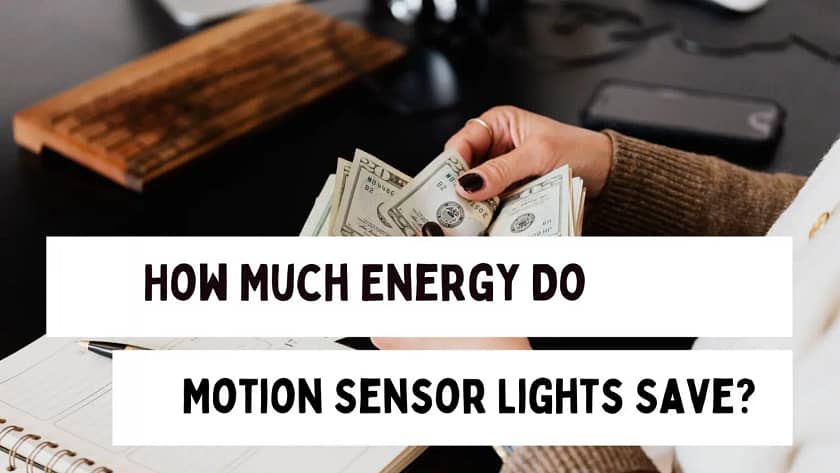Motion sensors are a brilliant invention that can help us save energy. They work by turning on lights when they detect movement and when movement stops; lights are off. Therefore, in the right environment (indoors or outdoors these lights can save money.
Most motion sensors have an automatic cut-off time of 20 seconds or 30 seconds. This means you can install a motion detector light for security purposes. You can also override the system and use it for outdoor lights. As a result, motion detector lights are perfect for spaces where you hardly visit, like a storage room.
Studies show motion detectors consume about one watt of energy per day in standby mode and about 5 watts in active mode. Below is a breakdown of motion sensors and how they save energy.
Why Install Motion Sensors Light In Your Home?
As mentioned earlier, motion sensors, when installed outdoors, can provide added security to your home. They are also an economical alternative to floodlights, as they automatically turn on at night. Motion sensors can reduce power consumption if they do not detect motion because lights remain dimmed or off.
Suppose, for example, that a motion sensor consumes 1 watt of energy in standby and 5 watts in active mode. The standby mode is on for 23 hours and the active mode is on for one hour per day. Phantom costs are nine cents a month. Therefore, the cost per kilowatt-hour of the motion sensor used is $0.84 per kilowatt-hour.
The type of fixture is an important factor when saving money on electricity because LEDs use less heat and are more energy-efficient than traditional bulbs. According to energy.gov, LED lights use 75% less energy and last longer than incandescent bulbs.
Apart from this, they are easy-to-install and are reliable motion-activated luminaires that are particularly useful for low-light rooms or interiors with little traffic. Motion-activated lighting has pros and cons, and understanding them can help determine whether your home can benefit from them.
In many cases, homeowners who pair their lighting controls with highly efficient light bulbs can make huge savings. LED can save 75% more energy than traditional bulbs like CFL and incandescent.

Can Animals Trigger Motion Sensor Lights?
Outdoor motion detectors are great for high heat environments, but they can trigger false alarms if small animals cross their path. Detectors use heat to detect motion. So when a warm body (human or animal) crosses its path, it detects temperature changes.
One way to reduce false alarms with your motion detectors is to adjust the sensitivity of the light. This, in turn, will solve the problems as your light will no longer come on when animals walk by. However, a properly installed motion detector can provide animal immunity. If a motion detector has high sensitivity or is mounted incorrectly, a pet will probably trigger the sensor.
Do Motion Sensor Lights Only Work At Night?
No, motion sensor lights can work 24/7 but they are brighter at night.
In Conclusion
Your home lighting contributes about 10% of your electricity use, according to Energy Rating. Reducing the energy consumption of your lighting is a great way to lower your electric bill. Motion detectors with LEDs can help achieve this.
Sensors also protect against intruders and are great energy-saving lighting in low-use rooms and outdoor areas. However, sensors tend to be a hindrance in living rooms, kitchens, and master bedrooms. For small spaces with little foot traffic, motion sensor lights are excellent.





